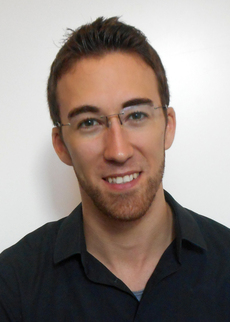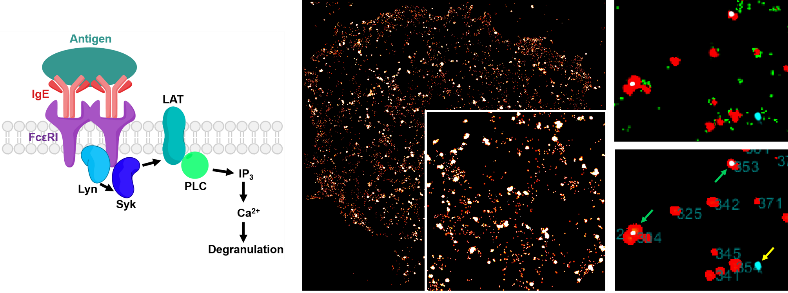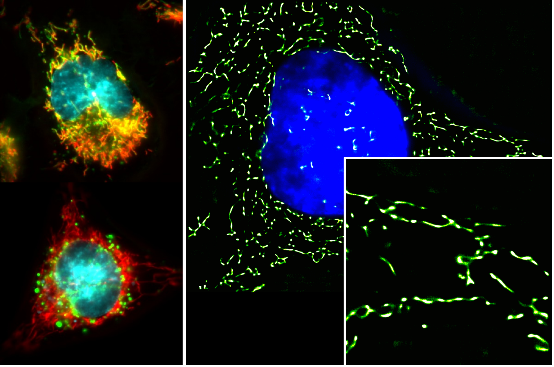
MSc. Jens Lackner
- Doctoral researcher
- Group: Prof. Gerd Ulrich Nienhaus
- Room: CS / CFN / B30.23 / R5-21
- Phone: 45343
- jens lackner ∂does-not-exist.kit edu
Institut für Angewandte Physik und Center for Functional Nanostructures
(CFN)
Wolfgang-Gaede-Straße 1
I am providing the expertise in advanced fluorescence microscopy techniques as well as time-resolved fluorescence measurements and spectroscopic methods for application and characterization of novel probes developed in the research training group. These techniques include single molecule localization microscopy (SMLM), Fluorescence-lifetime imaging microscopy (FLIM), Flash photolysis spectroscopy, Circular dichroism (CD) spectroscopy, Fluorescence lifetime measurements through Time-correlated single photon counting (TCSPC) as well as basic spectroscopy methods (Absorption, Fluorescence) and basic confocal microscopy.
Topic 1: Studies of early cell signaling in mast cells
This project is a collaboration with Sophina Christ/Leonie Schneider and the group of Prof. Dr. Niemeyer (IBG-1, KIT).
 To study early cell signaling events DNA origami nanostructures are used as a platform to present ligands to the surface receptors of the cells in a defined orientation with nanoscale precision. To investigate the activation of the surface receptors as well as crosslinking between different signaling pathways, super-resolution single molecule localization microscopy (SMLM) is used to observe interactions on sub-micrometer resolution.
To study early cell signaling events DNA origami nanostructures are used as a platform to present ligands to the surface receptors of the cells in a defined orientation with nanoscale precision. To investigate the activation of the surface receptors as well as crosslinking between different signaling pathways, super-resolution single molecule localization microscopy (SMLM) is used to observe interactions on sub-micrometer resolution.
Topic 2: Monitoring of siRNA in living cells
This project is a collaboration with Larissa Doll and the group of Prof. Dr. Wagenknecht (IOC, KIT).
 This project is about the visualization of the delivery of siRNA into living cells and to monitor its intracellular fate, including localization, upload into the RNA-induced silencing complex (RISC) and degradation rate. Specific siRNAs are designed and synthesized with a dye FRET-pair, an acceptor for the sense strand and a donor for the antisense strand of the siRNA. The siRNA antisense strand carries the sequence against EGFP as a reporter system. The fate of the siRNA is tracked in the cells by the variation of the donor-lifetime using fluorescence-lifetime imaging microscopy (FLIM).
This project is about the visualization of the delivery of siRNA into living cells and to monitor its intracellular fate, including localization, upload into the RNA-induced silencing complex (RISC) and degradation rate. Specific siRNAs are designed and synthesized with a dye FRET-pair, an acceptor for the sense strand and a donor for the antisense strand of the siRNA. The siRNA antisense strand carries the sequence against EGFP as a reporter system. The fate of the siRNA is tracked in the cells by the variation of the donor-lifetime using fluorescence-lifetime imaging microscopy (FLIM).
Topic 3: Photo-switchable cell-penetrating peptides
This project is a collaboration with Tim Schober and the group of Prof. Dr. Ulrich (IOC, KIT).
 Within this project cyclic, cell-penetrating peptides (CPPs) are investigated upon there uptake behavior and localization within the cells by confocal microscopy, as well as SMLM. These CPPs feature a photo-switchable diarylethene group, making it possible to switch between two defined configuration of the molecules, which differ in der uptake efficiency. Promising candidates are investigated upon their differences in uptake efficiency and fate within the cells and are tested in their function as light-controllable drug-transporters.
Within this project cyclic, cell-penetrating peptides (CPPs) are investigated upon there uptake behavior and localization within the cells by confocal microscopy, as well as SMLM. These CPPs feature a photo-switchable diarylethene group, making it possible to switch between two defined configuration of the molecules, which differ in der uptake efficiency. Promising candidates are investigated upon their differences in uptake efficiency and fate within the cells and are tested in their function as light-controllable drug-transporters.
